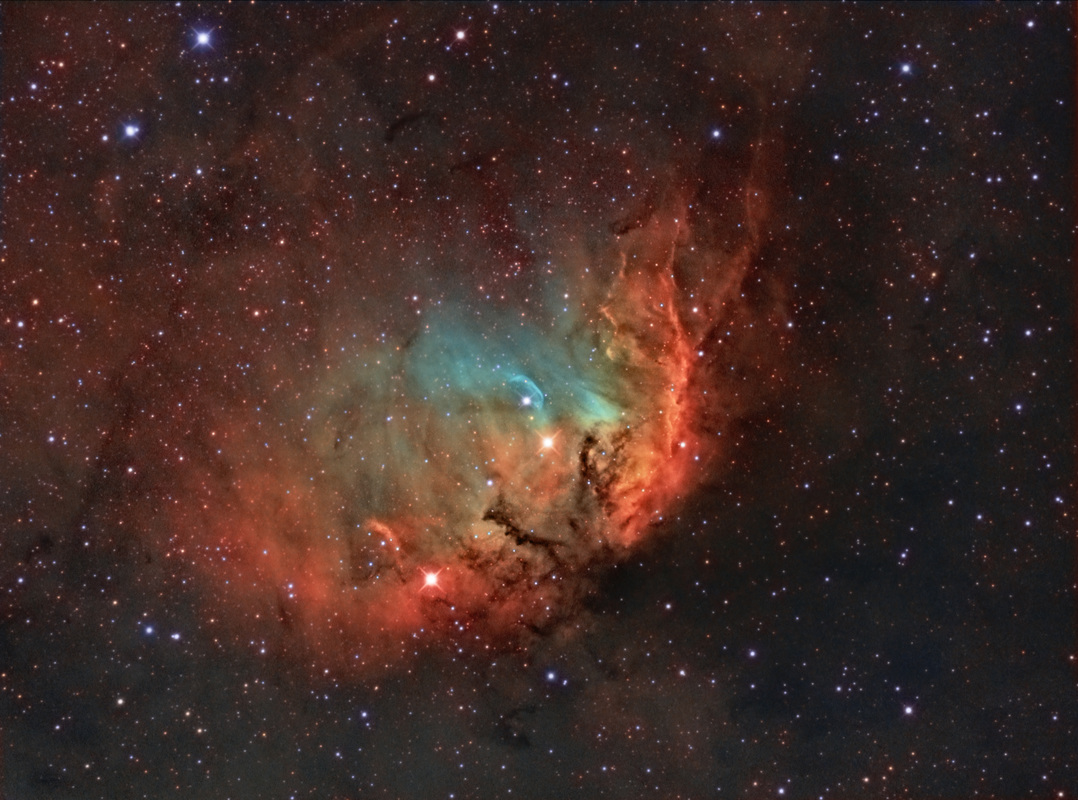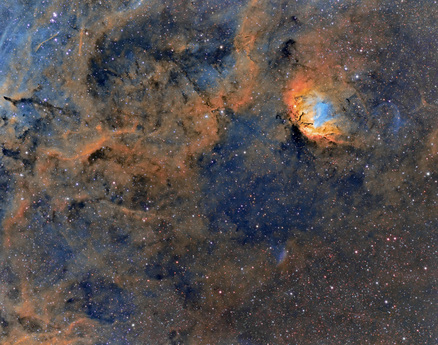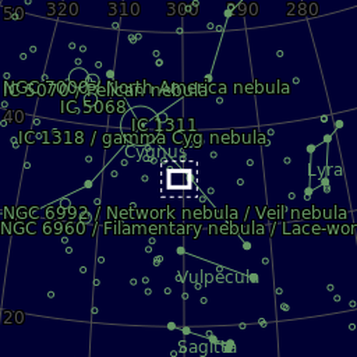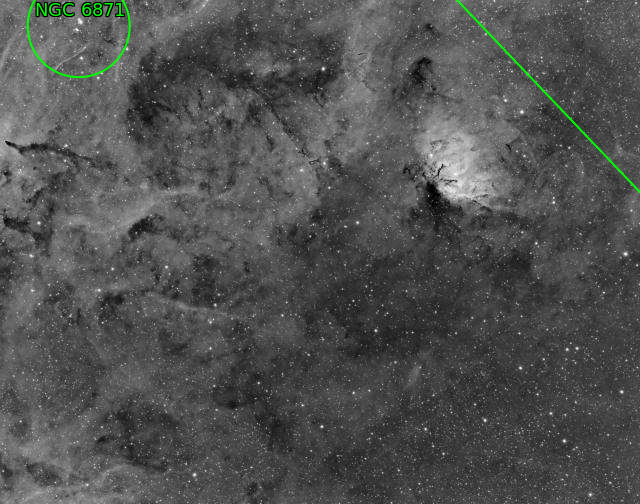Sh2-101 - The Tulip nebula
|
Details
M: Mesu 200 T: ODK10 C: QSI683 with 3nm Ha, OIII and SII Astrodon filters 25x1800s Ha 25x1800s OIII 24x1800s SII Total exposure time 37 hours Tulip wide fieldDetails
M: Avalon Linear Fast Reverse T: Takahashi FSQ85 0.73x C: QSI690-wsg with 3nm narrowband filters 14x1800s Ha 13x1800s OIII 14x1800s SII |
Cygnus X-1 star betrays the existence of the black hole because it is being whipped around an object every 5.6 days at a radius of 0.2 au. This indicates a mass of 14.6 solar masses in a compact area that can only be explained as a black hole. The black hole is also consuming the companion star. Material being siphoned off the companion star and accelerated as it whirls around the accretion disk is a source of Cyngus X-1's intense X-ray emissions characteristic of a black hole consuming matter. It can be spotted here with the loop on the right of the Tulip.
|




